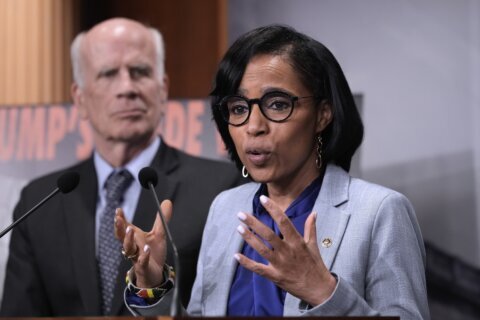A new report compiled by Maryland law enforcement agencies shows the number of statewide hate bias incidents in 2018 dropped to 375, down about 6% from the year before.
It marks the end of a three-year period during which reports of such incidents rose rapidly, but the numbers remain troubling for the Anti-Defamation League.
“We did see a slight decline,” said Doron Ezickson, D.C. regional director of the ADL. “Unfortunately, this was the second-largest number of incidents in the last 10 years.”
There were 203 reports in 2015, 296 reports in 2016 and 398 reports in 2017.
The lowest number over the past decade was in 2014, when Maryland saw 155 reports of hate bias incidents.
“It’s important that we maintain an eye on trends over time,” Ezickson said. “The trend is disturbing. The willingness to express hate is on the increase.”
According to the report, most incidents were related to race, religion or sexual orientation. Most often, they involved vandalism, intimidation or assault.
The most frequently cited “bias motivation” was anti-black sentiment, followed by anti-Jewish sentiment.
“The African-American community is repeatedly and consistently the most targeted community,” Ezickson said.
Many reports are labeled “inconclusive,” meaning investigators were not able to definitively say that the motivation was hate or bias.
Out of the 375 incidents reported last year, 260 were inconclusive, 100 were verified and 15 were unfounded. Verified means investigators did determine that hate or bias was the motivation, while unfounded means investigators determined that the incident did not happen as reported.
“The reporting structure is strong,” Ezickson said. “Maryland has committed a lot of resources, and law enforcement takes hate crime reporting quite seriously.”
According to the report, Anne Arundel County had 78 hate bias incidents last year, the most of any jurisdiction in the state. Montgomery and Baltimore counties each reported 76 incidents. Howard County had 58, and Prince George’s County had 28.
“We have a strong infrastructure in Maryland, but there is more work to be done,” Ezickson said.








